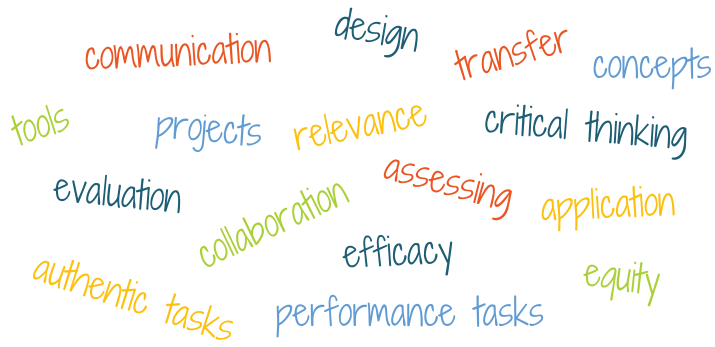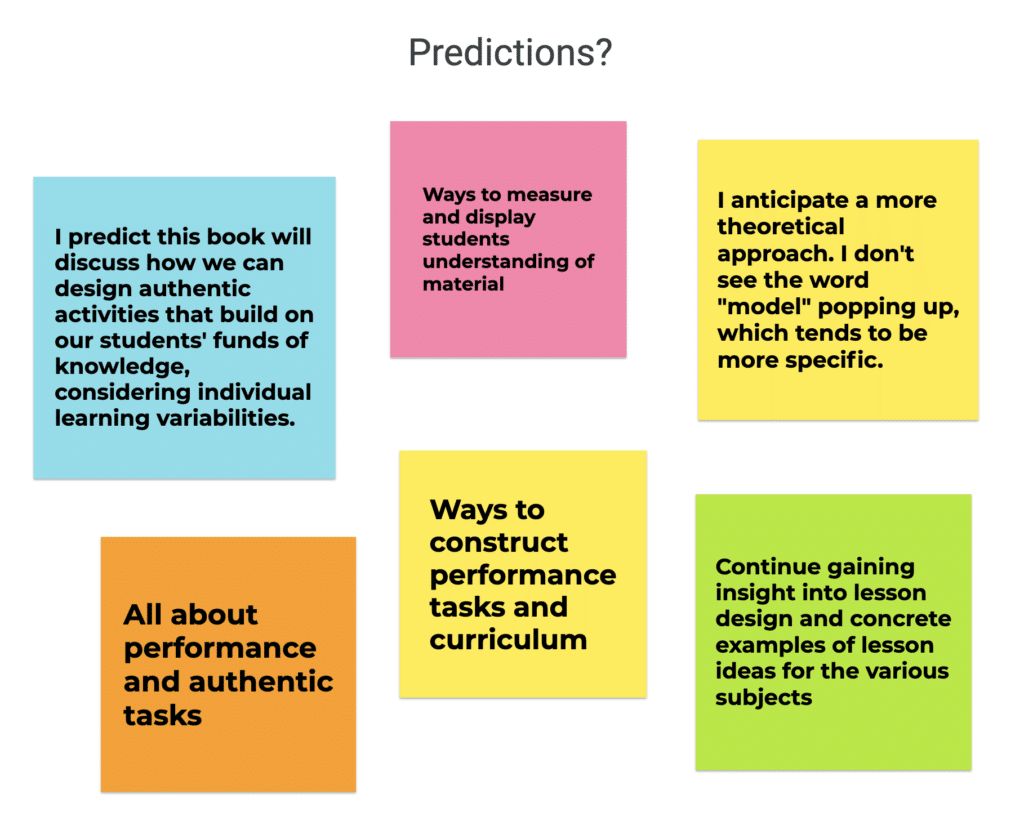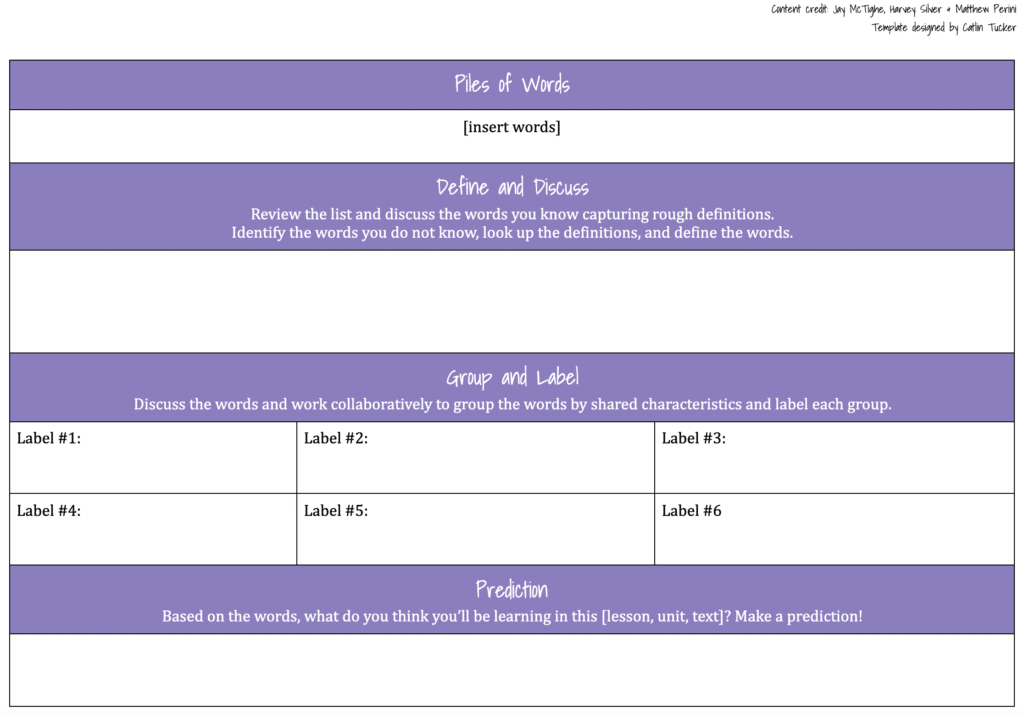Each new unit, text, or project presents learners with vocabulary words that may be new and unfamiliar. So, how do we get students to think more deeply about vocabulary? How can we make learning new vocabulary more engaging and meaningful? Matthew Perini, Harvey Silver, and Jay McTighe propose a simple yet powerful strategy called “pile of words.”
I love the pile of words strategy because it positions the students at the center of learning. Instead of the teacher simply pre-teaching vocabulary or presenting a word bank or word wall of key terms, the pile of words strategy challenges students to engage in conversation, work collaboratively, and think critically about vocabulary.
Here is how it works!
Step 1: Think about the unit, text, or project you are about to start and create a list of vocabulary words and key terms.
Select a list of vocabulary words and terms central to the unit, text, or project you are about to begin with your students. When I piloted this strategy with my students, who are teacher candidates, I shared the following pile of words from a text we were about to begin.
The size of your pile of words should be large enough to allow for sorting and grouping without overwhelming learners. If you are working with younger learners, you may want to keep your pile of words smaller. A third-grade teacher might present students with six words, whereas a tenth-grade teacher might present 15-20 words. You are the best judge of how many words you think your students can handle for an exercise like this.
Step 2: Group students and give them time to discuss and define.
Give students time to discuss and define the words. Which words do they know? Which do they need to define using online resources? Encourage them to capture their definitions in their notes so they are easy to reference throughout the unit, text, or project.
If you are working with younger learners, you may want to provide resources they can use to look up unfamiliar words or even provide them with definitions after they have had the opportunity to discuss and define the words they do know.
Step 3: Group the words into categories by shared characteristics and label each category.
Once students have defined the words, they should work collaboratively with their group to create categories. Which words share common characteristics? What would you label this category of words to reflect their commonality? Put the words with shared characteristics together in a category and give that category a name or label.
My students worked in breakout rooms using a Jamboard to organize and label their words. I invited them to make as many categories as they needed to sort and group the words.

The categories students create and the labels they assign to each category provide insight into their thinking. This step provides informal data about what they know and what gaps or misconceptions exist.
Step 4: Ask students to make predictions about what they expect to learn based on the pile of words.
After sorting the words into categories and generating a label for each, ask them to take a few minutes to review the words, categories, and labels and make a prediction about what they expect to learn based on this pile of words. What big ideas would they expect to explore studying this unit, reading this text, or working through this project?
Step 5: As students progress through the unit, text, or project, ask them to revisit their predictions.
Prompt students to revisit these predictions as they make progress through this unit, text, or project. Were their predictions accurate? Do they need to be refined based on what students are learning? Are there additional vocabulary words or terms they want to add to their pile of words?
I modeled this strategy with my teacher candidates hoping that they will use it to drive deeper learning. I created the template below to support them in using this strategy online or in a blended learning environment. Although I included six possible groupings in the “group and label” section, it’s important to tell students that they can create as many groups or categories as they need and to feel free to customize the template.
Pile of Words Template
The beauty of this simple strategy is that it can be used at any grade level or in any subject area to drive deeper thinking about vocabulary.
Looking for simple yet powerful strategies designed to drive deeper learning? Check out Jay McTighe and Harvey Silver’s book Teaching for Deeper Learning!
Leaders looking to support teachers with self-paced online learning opportunities this summer can request a quote for my Getting Started with Blended and Online Learning and my Advancing with Blended and Online Learning courses!





18 Responses
So much learning taking place with these activities. We used to just call it brainstorming. I would just use a web, but I like the idea of breaking it into categories. Students know much more than what they even believe they know. Thanks for putting these strategies out there! I need to get your book, “Teaching for Deeper Learning”. Thanks again
Hi Tracey,
I’m reading Teaching for Deeper Learning though I did not write that one 🙂 All of the credit goes to Jay McTighe and Harvey Silver. It is an easy read with some great strategies teachers can implement right away.
Take care.
Catlin
Im excited to learn the rubrics different styles, Im anxious to have students grade their own or their peers , with the use of rubrics. it will be a great learning opportunity for self management.
Can’t wait to try it. — seems like a variation on list-group-label
I like this also and will try it in my math class. I like that they can come up with connections and how words go together. They love playing games to learn.
Thanks for sharing this strategy. I will use in my my new unit. It will be helpful in the inquiry.
Very useful strategy. I have done something similar as a teacher. Asking students to list the words and do a dictionary activity out of it.
Thank you very much, Dr. Tucker! I know that understanding the vocabulary is paramount to comprehending what one is reading, so I am very happy to see this strategy and I plan to share it in my ELAR PLC on tomorrow!
You’re welcome, Carla! I’m thrilled you are going to use this strategy right away. I really enjoyed using it with my students!
Take care.
Catlin
Reminds me of list-group-label. Love your take on the strategy:)
Cannot wait to try this technique. I just finished reading Teaching for Deeper Learning and excited about implementing these strategies into my curriculum
Oh wow! I had some great ideas from this reading. I cannot wait to see how they work.
I cannot wait to try this strategy out in my future classroom. Vocabulary lists can become a tedious and empty process for students. This strategy can make the process more engaging for students and bring more meaning into the importance of the vocabulary.
These are some great methods! As a future English teacher these are great to keep in mind!
I can not wait to try this strategy done in my ELA class.
That’s wonderful to hear, Collin. It’s a fun way to engage students in critical thinking at the start of a unit!
Best,
Catlin
I love how you could incorporate these games into every subject and most grades.
Thank you, Jennifer! I’m glad that was helpful!
Best,
Catlin